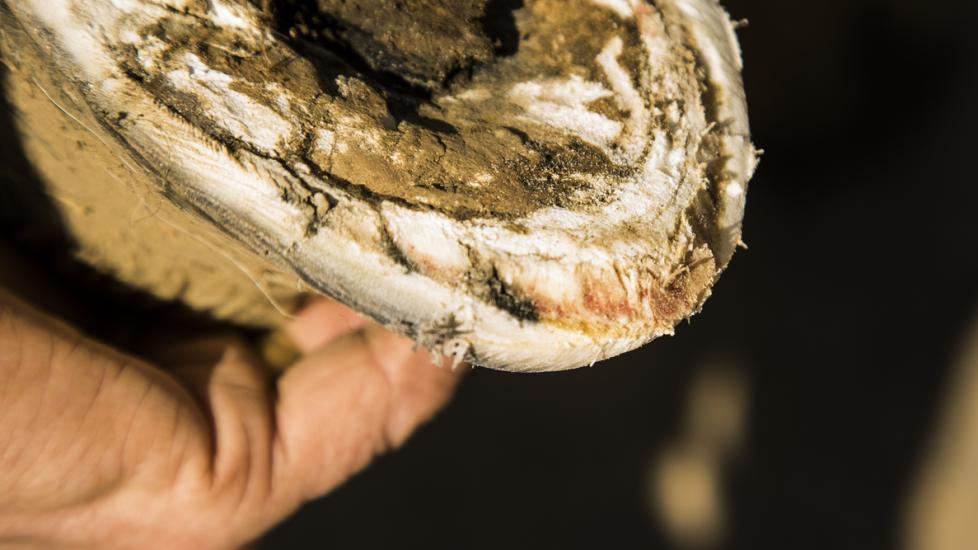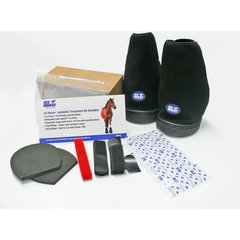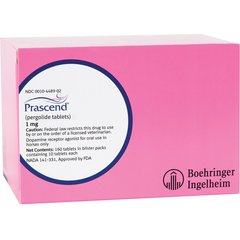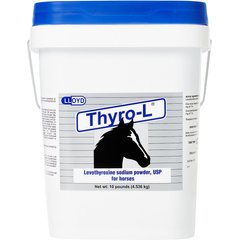Laminitis in Horses (Founder)
iStock/SashaFoxWalters
What Is Founder in Horses?
Founder is the common name for laminitis, a painful condition of inflammation and damage to the tissue (laminae) between the hoof and coffin bone that can affect both horses and donkeys
Within the hoof, there are structures called laminae that attach the hoof wall to the coffin bone. When a horse “founders,” these laminae become inflamed, the blood supply becomes compromised, and the structures break down.
Once the laminae structure is damaged, the weight of the horse's body causes the bone to separate from the hoof wall. This can be seen with X-rays as the bone rotates within the hoof and sinks toward the sole.
Horses can founder on all four limbs, but the front limbs are most commonly affected.
In severe cases with the lamina damaged, the weight of the horse’s body can lead to the bone and hoof wall separating. On radiographs, the bone can be see rotating within the hoof and sinking toward the sole. Veterinarians will describe this in degrees rotated.
Laminitis in horses is often a symptom of another systemic issue occurring in the horse's body.
Although there are many factors that can lead to laminitis, it’s most common in older horses. Ponies, Morgans, and draft breeds are at especially high risk, but the condition can be seen in any breed.
Horses with a previous diagnosis of equine metabolic syndrome (EMS) or equine Cushing's disease (PPID) are also at increased risk for foundering.
Equine laminitis is most frequently seen in the spring and fall but can be seen at any time of year.
Signs of Founder in Horses
Founder in horses may present as acute (sudden) or with chronic symptoms:
Acute Laminitis
-
Sudden lameness at the walk
-
Increased heat in the hoof wall
-
Increased digital pulses
-
Hoof tester sensitivity over the toe of the horse
-
Laying down more than normal
-
Unwilling to move
-
Standing with front legs stretched out in front
Chronic Laminitis
-
Characteristic laminitis rings on hoof
-
Widening of the white line
-
Sinking/flattening of the sole
-
Lameness
What Causes Laminitis in Horses?
There are five main causes of founder in horses:
Insulin Dysregulation
Insulin plays a big role in the health of the laminae. Disruptions in the normal function of insulin in the horse's body can result in founder.
Obesity, EMS, PPID, and high carbohydrate diets can all contribute to insulin dysregulation and founder. Of these, obesity is the number one cause of founder in horses, and often seen in older horses over the age of 15.
Acute Illnesses
Severe colic or very high fevers are also potential risk factors because of the increased systemic inflammation which can impact the laminae.
Dietary Problems
Quick ingestion of large amounts of grain (grain overload) or eating certain toxins (such as black walnut shavings) can also lead to founder.
Mechanical Founder
The horse's natural movement when walking is key to maintaining adequate blood flow in the hoof. Therefore, any condition that results in overweighting a single limb for an extended period of time (weeks to months) can lead to laminitis as well.
Fractures or other severe, non-weight bearing lameness are the most common causes of these types of founder. This type of laminitis is often referred to as mechanical founder.
Steroid Overdose
In rare cases, founder is seen in horses that are placed on high doses of steroids such as dexamethasone or prednisolone.
How Veterinarians Diagnose Founder in Horses
A thorough history is key to determining if predisposing factors exist for laminitis. Your vet may ask questions such as:
-
Is the horse older?
-
Is the horse overweight?
-
Has anything changed in their diet (new grass or grain)?
-
Has a traumatic event occurred (colic, fever, severe lameness)?
-
What medications is the horse taking?
The veterinarian will then perform a thorough physical and lameness exam.
A short and choppy forelimb gate (“walking on eggshells”) is a classic symptom of laminitis. The horse will often have a very difficult time circling in either direction as well.
Horses can founder on all four limbs, but the front limbs are most commonly affected.
The veterinarian will then check for the presence of increased or "bounding" pulses in the distal limb (known as digital pulses), which are a very strong indicator of inflammation within the hoof. Hoof testers are often used to check for sensitivity at the tip of the frog. When rotation occurs during founder, the tip of the coffin bone comes closer to the sole and leads to soreness at this location.
Finally, the veterinarian will take X-rays to look for evidence of rotation or sinking.
Note: Rotation and sinking may not be seen on radiographs right away, especially in acute laminitis cases. It takes time for the laminae to break down enough to see physical changes in the position of the bone in the hoof.
How To Treat Founder in Horses
For acute cases of laminitis in horses, non-steroidal anti-inflammatory drugs (NSAIDs) can greatly improve the comfort of the horse as well as decrease the inflammation in the hoof.
Strict stall rest with deep bedding can help to minimize the amount of rotation that occurs during a founder episode. Ice boots or cold hosing can also help to decrease inflammation. Horse laminitis kits are also available.
Anti-inflammatories and rest only help to improve the comfort of the horse during the episode. Because founder is often the symptom of another disease or injury, the most important treatment is to resolve the initiating cause.
For horses with EMS or PPID, diet changes and the correct medications (Prascend®, InsulinWise®, Thyro-L®) are key.
Obesity compounds both of these diseases, so weight loss will be a key factor in the veterinarian's plan. Additionally, decreasing carbohydrates in the diet is shown to significantly reduce founder episodes in horses with EMS and PPID.
NSAIDS and/or antibiotics may be needed to resolve a colic or fever.
For fractures or other lameness that cannot be resolved quickly, appropriate stabilization, support, and pain management are key to preventing laminitis before it can begin.
Corrective shoeing and trimming can also be used to give the horse relief by redistributing weight from the point of the frog.
Recovery and Management of Laminitis in Horses
The more quickly the underlying causes of laminitis in horses are addressed, the better the horse's prognosis.
Horses with mild founder can live long, productive lives if they are managed appropriately. Proper diet and hoof management play a key role in the long-term health of a horse after founder.
Severe cases of horse laminitis can result in irreversible changes within the hoof causing life-long lameness. For these horses, NSAIDs may be used for pain management, however, euthanasia is often elected due to quality-of-life concerns.
Equine Laminitis FAQs
Can horses recover from founder?
Yes, horses can recover from founder if it is caught and addressed early. There are cases, however, where changes in the foot such as coffin rotation will result in lifelong lameness.
How do I prevent my horse from foundering?
Although not all causes of founder are avoidable, the most common causes can be managed. Work with your veterinarian to ensure that your horse is on an appropriate diet and in good body condition. As your horse ages, perform routine blood work annually to ensure EMS and PPID are detected and treated early.
Is there a new treatment for laminitis in horses?
Research on treatment and prevention for laminitis is ongoing in the equine field. Today, treatment is heavily focused on cooling the hoof, supportive care and administering nonsteroidal anti-inflammatory medications.
Are there any home remedies for founder in horses?
While there are no home remedies, laminitis can be prevented or managed when a horse is kept in good body condition, annual blood work is performed to monitor for any metabolic changes and any changes diet are performed gradually. If you live in a geographic region that has spring and fall high sugar levels in the grass, then carefully introducing horses to this can decrease laminitis risk significantly.
What is laminitis vs. founder?
Laminitis refers to inflammation of the lamina (tissue) within the horse’s hoof. Founder is a broad term that describes laminitis.




